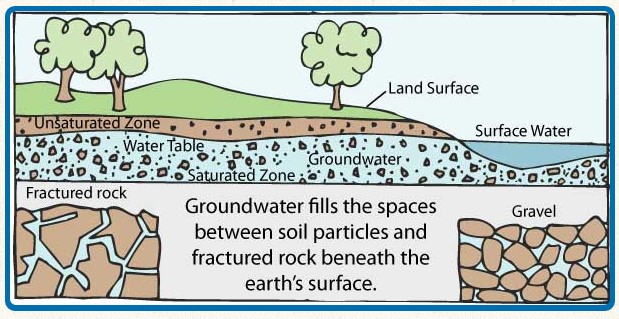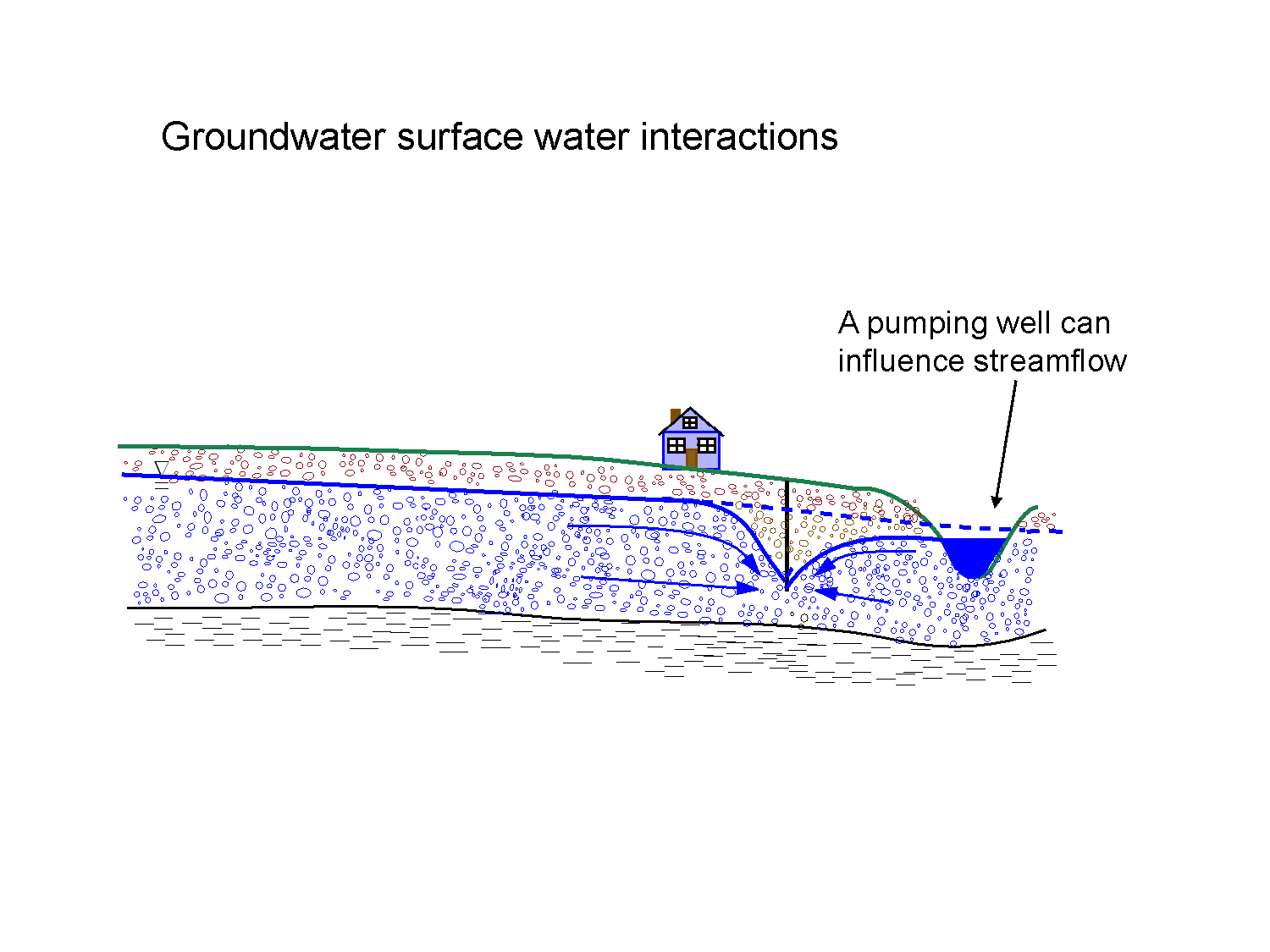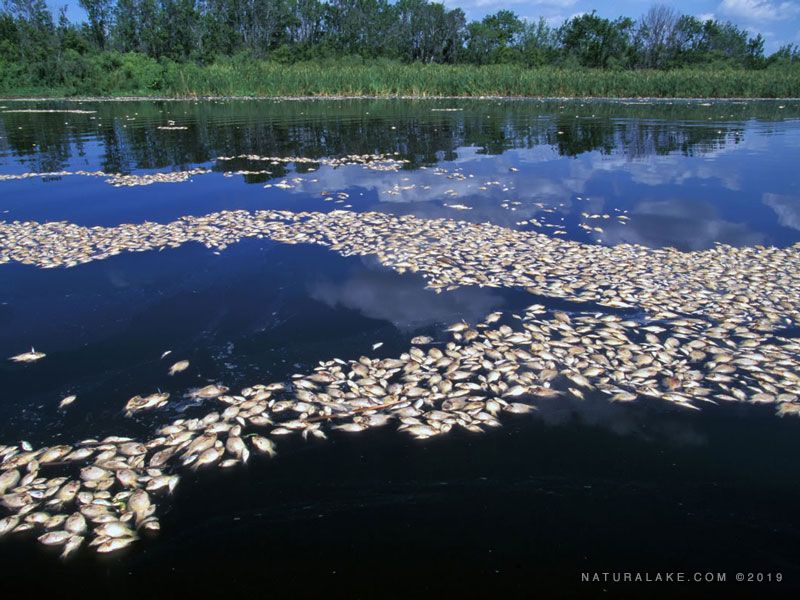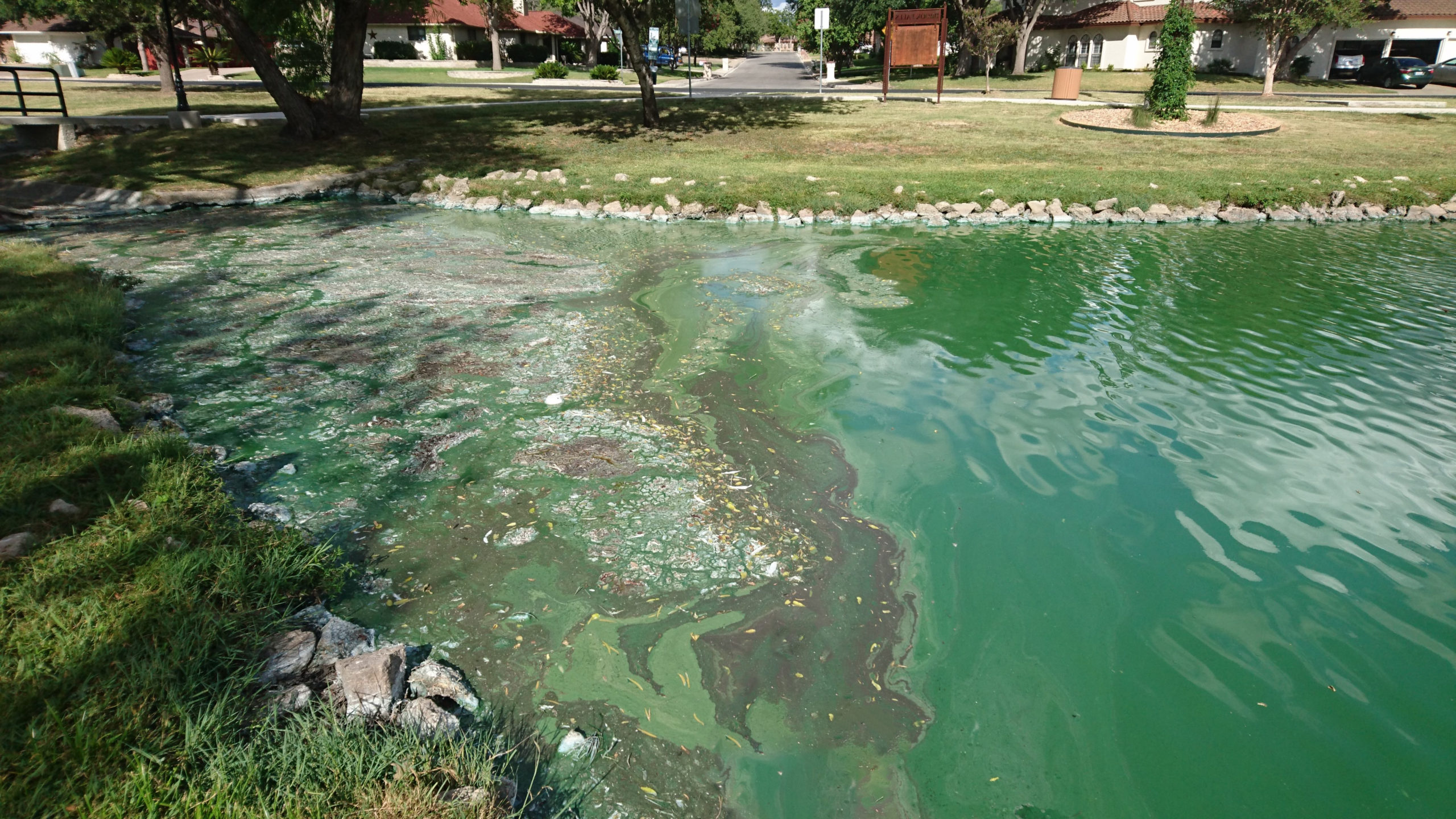
Groundwater – making the invisible visible
by Deborah Lee
What is groundwater?
When rain falls on the ground, the water does not stop moving. Some of the water flows along the surface and ends up in streams, lakes, and ponds. Some of the water is taken up by plants, some evaporate, and some continue to travel into the ground. Water travels through the spaces, pores, and fractures in the soil and rock below the earth’s surface. Some of it eventually pools into underground wells or aquifers. The water contained below the earth’s surface comprises groundwater and makes up a significant portion of the earth’s freshwater.
Movement of groundwater
The way groundwater moves through the ground is not like an underground river. It moves slowly through soil, sand, and rock. It can collect in areas of gravel, sand, sandstone, or fractured rock called aquifers. The movement of groundwater is slow, at most several feet a day, and depends on how well the spaces between the soil, sand, or rock are connected. The connections between the spaces depend on the porosity and permeability of the ground. Porosity refers to the spaces between the soil, sand, or rock. If an aquifer contains a mixture of sediment sizes and types, such as clay, sand, and gravel, the smaller particles fill the pore spaces between the larger particles and reduce the amount of open space available for water.
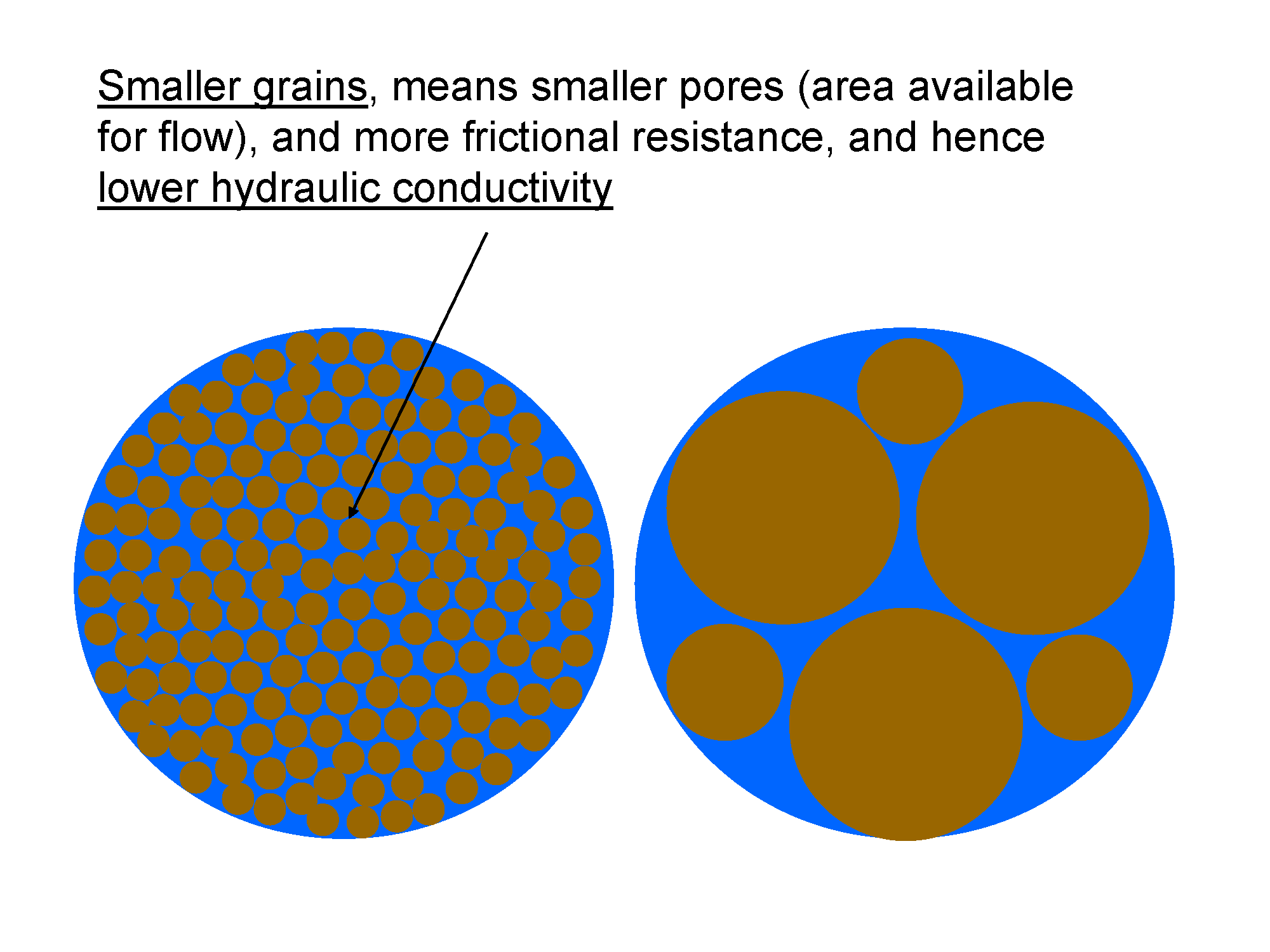
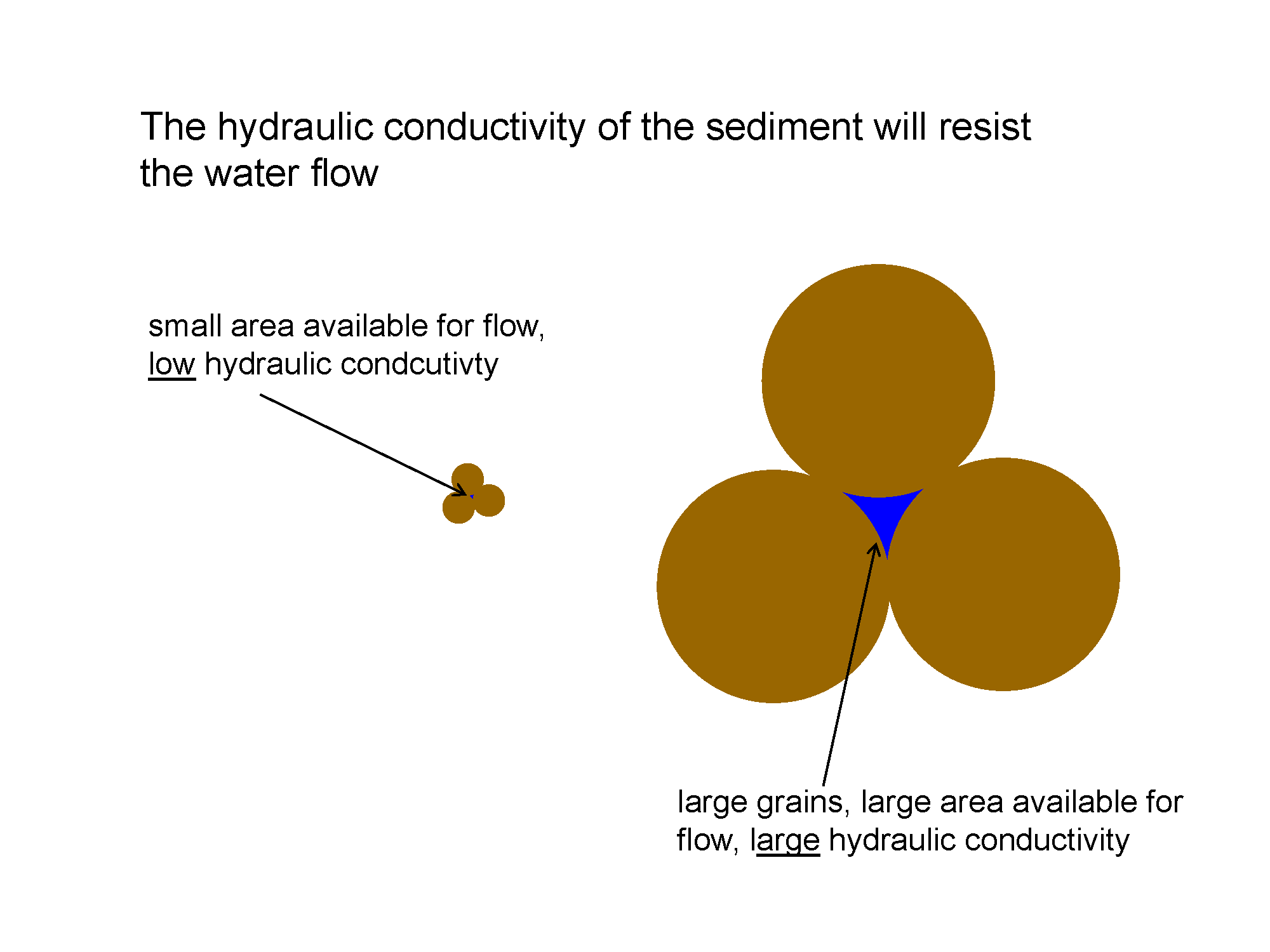
Groundwater vs Porewater
Groundwater is similar to porewater since both are moving within the soil, sand, or rocks of the ground. Porewater is water that is generally closer to the surface of the sediments and can cycle between the water and sediments. In some cases, the groundwater can move into the porewater and into the water of a river, lake, stream, or spring. This also means that anything dissolved in that groundwater will also move into that body of surface water.
What’s in groundwater?
Groundwater can contribute nutrients to lakes, but it can also carry them away. Most point sources for nutrients are regulated, such as wastewater, however, there are a lot of unregulated nonpoint sources of nutrients to groundwater that can end up in lakes and cause negative impacts. Some nonpoint sources include soil erosion, agricultural application of fertilizer and manure, and leaky septic systems. Organic nitrogen and phosphorus can occur in dissolved forms that can be picked up by groundwater working its way through the soil and contribute to total nitrogen and total phosphorus in lakes or wells. Highly-permeable soils, with grain sizes similar to sand or larger, can facilitate nutrient movement from the soil into groundwater. This results in the contamination of groundwater which can impact drinking water, lakes, or streams.
How to protect groundwater?
Groundwater is a hidden resource that is often taken for granted. This puts it at risk of contamination or overuse. Some external methods to reduce nutrient contamination of groundwater include: adding a permeable barrier close to shorelines that can remove dissolve phosphorus from shallow groundwater before it enters the lake, encourage vegetation growth for nutrient uptake, monitoring and fixing leaky septic systems, and decrease phosphorus and nitrogen enriched fertilizer use on agricultural fields. For more tips check out the National Groundwater Association.
About the Author
Deborah Lee is a senior Microbiologist at Natural Lake Biosciences, with 11 years of experience in microbial communities and their relationship with nitrogen and ammonia in aquatic ecosystems. Deborah’s testing on aquatic plants and algae in the Natural Lake Biosciences lab has led to many product developments and improved formulations. Her expertise in microbiology, algae, and aquatic plants is invaluable.


